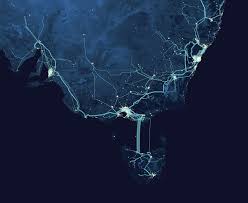
A multibillion-dollar risk to a small state under financial strain has greater benefits for the mainland than Tasmania, writes Ruth Forrest
As Tasmanians headed to the polls at the weekend, with many casting early votes, we did so without a clear picture of the single biggest infrastructure decision of our generation.
Buried beneath the noise of an election campaign was the looming final investment decision on Marinus Link a close to $4bn interconnector, and over $5bn when we include the North West Transmission Developments (NWTD) that, if given the tick, will reshape Tasmania’s energy system, our economy, and our household and business energy bills for decades.
The public still hasn’t seen the whole-of-state business case that supposedly would have justified this leap of faith. We’re told the Marinus Board gave its enthusiastic tick of approval in late May. But of course they did. You wouldn’t expect the people driving the project to suddenly slam on the brakes. Now it’s up to the Tasmanian, Victorian and the commonwealth governments to make their call in July. Is the decision-making already well advanced, or a decision made, behind closed doors during caretaker period? I hope not!
This is not how you manage a multibillion-dollar risk on behalf of a small state under financial strain, that has greater benefits for the mainland states than it does for Tasmania.
From day one, the Marinus narrative has been wrapped in national ambition: Tasmania, as the “Battery of the Nation,” must do its bit to help Australia decarbonise. But lost in that noble sentiment is any serious accounting of Tasmania’s options, our limits, and our liabilities. Under the intergovernmental deal, Tasmania is responsible for 27.6 per cent of Marinus’s regulated cost recovery.
That’s right, Tasmanians will pay almost a third of the transmission costs for a national asset, even though we make up just 2 per cent of Australia’s population.
Victoria pays the rest, being on the other end. No other state contributes a cent.
Even if Tasmania sells its 17.7 per cent equity stake to the commonwealth, suggested to be worth about $137m, that won’t shift our annual liability one iota. The real kicker we are still on the hook for the annual transmission costs to be recovered from our electricity customers that are set by the Australian Energy Regulator.
How much is that bill? About $120m per year once you include both Marinus and the NWTD. Around a quarter will land on households, about $110 extra per year per home.
The rest hits business, including those already battling high costs and uncertain markets.
That’s just the start. With Basslink now also becoming a regulated asset, Tasmanians will be footing another $19m annually in cost recovery.
In total? Roughly $140 more each year on household electricity bills and no guaranteed benefit in return.
And here’s where it gets worse. The entire logic of Marinus rests on Tasmania’s ability to export surplus hydropower at high prices. But recent inflow data tells a different story.
In both 2023-24 and 2024-25, hydro inflows were significantly lower just 6200 GWh and 6400 GWh, respectively.
That’s not just bad; it’s below the worst year of the millennium drought.
Hydro Tasmania produced just 6300 GWh last year with wind and Basslink imports picking up the slack. That’s not the posture of a powerexporting state. And yet, both major parties appear ready to commit to Marinus without seriously confronting this reality and considering all other options in the interest of Tasmania.
Neither the Liberals’ 2030 “Strong Plan” nor Labor’s “Fresh Start” have grappled with the structural deficit or the collapse in own-source revenue, especially from key government businesses such as Hydro, which recently had $154m in forecast earnings quietly erased from the forward estimates in the now binned 2025-26 budget.
You’d think, then, we’d have seen the whole-of-state business case before decisions were made.
Despite promises, despite confirmation that the government has had the document since May 16, Tasmanians are still in the dark.
We’ve been here before. Basslink was touted as a money-spinner in 2006. It failed, went into receivership. And still, no full accounting of what went wrong.
Now, we risk repeating history, just with a bigger price tag and weaker hydrology. But this time nobody will be able to see the financial consequences of the investment in Marinus and NWTD because the costs will still be recovered from the bills of our electricity customers.
And let’s not forget what’s changed since Marinus was first proposed. Transmission construction costs have soared 55 per cent in just two years. Snowy 2.0 is billions over budget. Community resistance to transmission lines is growing. And new technologies, from grid-scale batteries to distributed generation, are challenging the very logic of centralised, mega-project planning.
Marinus is being sold as a nationbuilding project. If that’s true, then the nation should bear the risk.
That means full commonwealth underwriting, iron-clad cost protections for Tasmania, and upfront subsidies not Band-Aids once the damage is done.
Because here’s the truth: Tasmania is not Snowy Hydro.
We don’t have deep pockets or political insulation.
What we have is a fragile budget, a complex energy system in flux, and a hydro asset that’s ageing and increasingly costly to maintain and/ or expand. Before we commit to a project of this scale, we need answers.
We need transparency. We need to see the whole-of-state business case and real scrutiny.
And most of all, we need the courage from our political leaders of any stripe to say what must be said: “Not yet until we are sure this is the right decision, the right model for Tasmania and the right approach.”
Marinus may still have a role to play in our energy future. But blind faith and closed-door decisionmaking are not good enough.
Not now. Not ever.
The Mercury, Monday 21 July 2025

